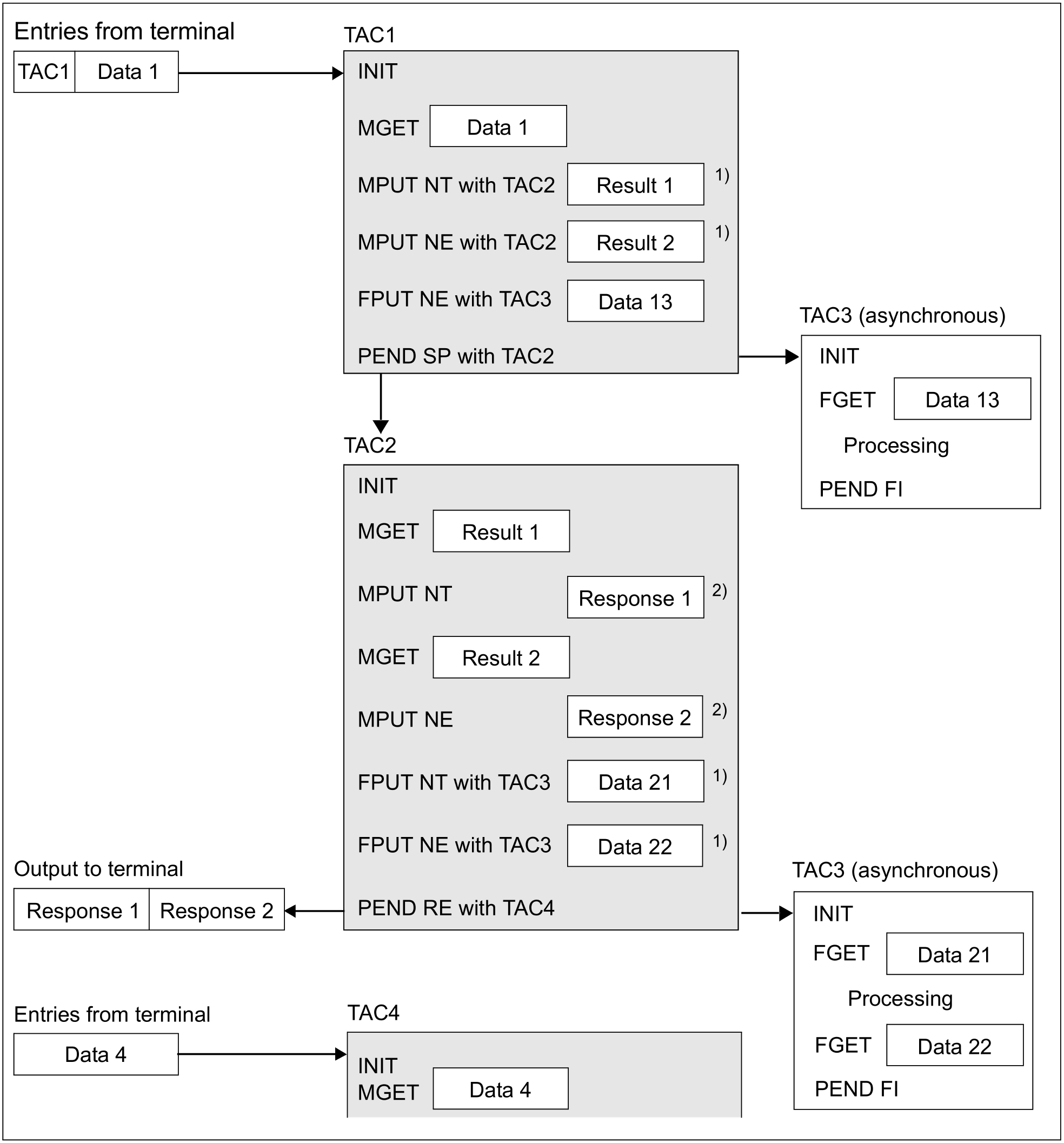The KDCS interface enables you to process message segments. In this way, you can combine message components in order to forward them to the communication partner as a complete message.
The use of message segments has the following advantages:
message areas only have to be as large as the largest message segment
message segments can be processed separately
formats can be made up of partial formats.
You use the MPUT NT, FPUT NT, DPUT NT or DPUT QT call to send message segments to openUTM.
Message segments may be addressed to a terminal, a client program, a queue, a printer, a follow-up program unit, a local asynchronous service or, with distributed processing, a remote partner.
In all cases where multiple message segments are addressed to a program unit, you must read each of these message segments with a separate DGET, MGET or FGET.
On BS200 systems, the following applies: If you use formats then you can send formatted message segments in messages to terminals and printers. In the case of dialog messages to terminals you must then use partial formats (see "Using partial formats (BS2000 systems)"). In the case of formatted asynchronous messages to terminals, each message segment is treated as a separate message. In the case of formatted asynchronous messages to printers, the message segments are combined to form a logical unit.
Messages with format identifiers can also be sent to UPIC clients as well as to LU6.1 partners. Formats are not used to prepare the messages for these partners, but more precisely to describe the structure of the user data. openUTM does not call a formatting routine when sending formatted messages to these partners, rather the format name is sent to the UPIC client or LU6.1 partner instead.
Note on the diagram below
If, in the first program unit (TAC1), FPUT is written as FPUT NT, it will again produce an asynchronous message of its own since openUTM terminated the message with PEND PR.
Figure: Message segments
1) If message segments are sent from one program unit to another, each message segment must be read with its own MGET NT or FGET.
2) Message segments to a terminal are combined by openUTM into a single message.

